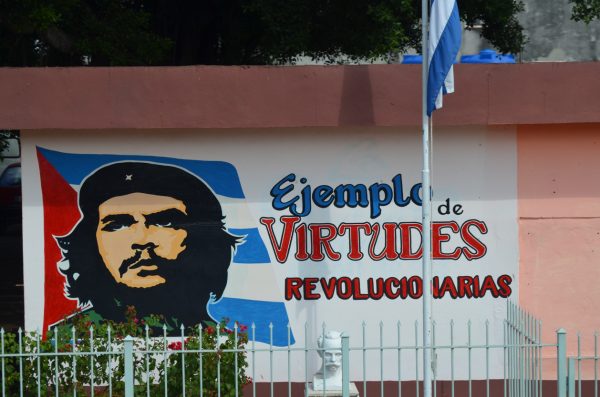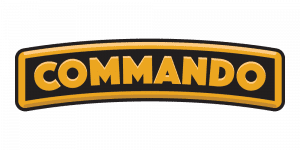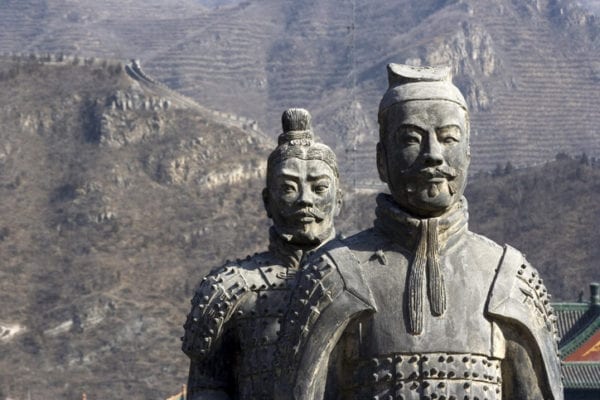What is guerrilla marketing?
Guerilla marketing is advertising that is directed toward a target audience, who is not the intended market.
There are several forms of guerrilla marketing campaigns, but all of them involve the use of unconventional or innovative methods to promote products and services through non-traditional channels, such as social media and word-of-mouth.
A guerrilla marketing campaign is an effective way for small business owners to get their brand noticed in a crowded market.
It can also help them gain credibility and build trust with customers who might be hesitant about buying from a new business or are looking for something out of the ordinary.
The term guerrilla marketing refers to the tactics used by guerrillas in wartime, who use surprise attacks on the enemy and sabotage. The methods of guerrilla marketing are similar: we often employ them for low cost and high profit.
Guerrilla marketing tactics use advertising that grabs attention quickly and effectively in order to gain exposure and build trust with potential customers.
This type of marketing can take many forms, from unconventional product placement to creative social media campaigns, but all involve using innovative methods to promote products and services in unconventional ways.

Guerrilla marketing examples
There are many marketing tactics that businesses can use to create interest in their products and services. One such tactic is guerrilla marketing, which involves using unconventional methods of advertising to draw attention to a product or service.
One type of guerilla marketing is called a “flash mob.” In these events, people gather in public places to create the illusion that they are spontaneously meeting one another.
An individual or a group may organize these gatherings, and they occur with little or no planning.
Over time, businesses adopted guerrilla marketing tactics to quickly and effectively promote their brands. Today, many companies use guerrilla marketing strategies to generate excitement around new products and services, attract new customers, and build brand awareness.
Some other guerrilla marketing examples include sidewalk graffiti campaigns, experiential marketing projects, guerrilla ads on public transport, guerrilla stunts, viral marketing, social media competitions, guerrilla giveaways, and pop-up shops.
While most guerrilla marketing campaigns can create an effective way to promote your business, it is also important to consider the potential risks and legal implications of these types of campaigns.

It is essential to work with a trusted marketing team that understands how best to leverage advertising strategy and guerrilla tactics while staying compliant with local regulations and laws.
Whether you are looking to create a splash with guerrilla marketing or simply want to gain more visibility for your brand, there are many strategies you can use in order to achieve success.
By creating interesting content that resonates with your target audience and engaging them using creative tactics, you can effectively reach new customers and grow your business.
Why is it called guerilla marketing?
The definition of a guerrilla is “a member of a small independent group taking part in irregular fighting, typically against larger regular forces.” Another definition is “Referring to actions or activities performed in an impromptu way, often without authorization.”
Guerilla marketing is a term used to describe the use of unconventional marketing tactics to increase sales or generate attention. It compares the nature of guerrilla warfare in marketing terms.
The term came into common usage in the late 1960s after Cuban revolutionary leader Fidel Castro invaded a sparsely populated area of Cuba with hundreds of soldiers, which led to his capture and eventual overthrow.
So why is guerrilla marketing called “guerrilla”? The name likely stems from the fact that we often conduct these kinds of campaigns in an unplanned or guerrilla-like manner.
Guerrilla marketing is often used by smaller businesses or startups who don’t have the large budgets that bigger companies do for traditional marketing campaigns.
Today, guerrilla marketing is the new way to market your business. It’s a low-cost, high-impact marketing strategy that can increase sales and boost engagement with your customers.
What are the principles of guerrilla marketing?
Guerrilla marketing is a guerrilla-style approach to marketing that emphasizes creativity and innovation over traditional methods like advertising and mass promotions.
At its core, guerrilla marketing is based on the principles of unconventional thinking, resourcefulness, flexibility, and experimentation. A successful guerilla marketing tactic will employ these principles.
We root in these principles because marketers should constantly be testing new tactics and strategies to achieve maximum results and break through the noise of traditional marketing channels.
Some common techniques used in guerrilla marketing include grassroots events and outreach efforts, guerilla billboards and signage placed in unexpected locations, guerrilla PR campaigns designed to generate media coverage and social media engagement, and influencer partnerships designed to reach targeted audiences with tailored messaging.
Overall, guerrilla marketers need to be creative and tap into the power of word-of-mouth marketing to create buzz and drive conversions. The essence of guerrilla marketing is its ability to embrace the unexpected to capture the imagination of the market.
Principles
Creates Surprise
A surprise results from an unexpected situation. This is when something occurs in a way that one or more participants were not expecting.

You can catch people’s attention by using familiar objects in unusual places and unusual times. You can use unexpectedness to your advantage. People pay more attention when they are presented with a surprise situation.
Marketers may use this scenario to draw people to their site, especially on the internet, in order to deliver a marketing message.
That an unexpected campaign may be seen as negative by the target audience can make it difficult to employ guerrilla marketing effectively. As part of the AIDA model’s Attention phase, the marketer must design the campaign so that it minimizes the negative effects of surprise.
Segmentation and targeted audience profiling are two of the most critical steps in building a guerrilla campaign that uses the element of surprise effectively.
Impactful
Oxford Dictionary defines “drastic” as having a strong, far-reaching effect.
Guerrilla marketing campaigns should include a touch of drama to reach the most relevant audience in an emotionally interesting manner.
Drama gives the marketer the ability to reach large numbers of recipients without spending a lot on marketing.

This element can make a campaign cost-effective and provide high levels of attention and interest. However, any form of extreme behavior can lead to the target audience rejecting the message.
We can also interpret it as impolite, or negatively affecting their personal values. So it is critical to be thoughtful about the negative aspect of employing highly dramatic and impactful guerrilla tactics.
Entertaining
Humorous marketing communications can help to reduce the distance between sender and receiver — the business organization and customer. In addition, entertainment in marketing communications may increase campaign efficiency by reaching a larger audience.

Although it is difficult to achieve humor in marketing communication and promotion, there are many examples that show that this effect is common.
It is the humorous element that distinguishes the guerrilla marketing campaign from more traditional marketing. Not all guerrilla marketing campaigns include humor or entertainment, but those that reach more people and create more interest.
We often use humor in viral marketing campaigns distributed via the internet.
Short Duration
Guerrilla marketing campaigns are usually quite limited in time. This means that recipients of the message know that the guerrilla marketing campaign is temporary and may not be repeated in the same market.
This is a crucial aspect of guerrilla marketing on the internet because there are many interactive tools and techniques that can create long-term guerrilla campaigns that only allow any consumer to view the campaign temporarily, or even only once.
Although the campaign may last for several months, visitors will never see it again after they have seen it for the first time.
Inexpensive
Guerilla marketing strategies can often be attractive because of their low cost relative to other types of marketing. The goal is to generate buzz, rumors, and an immediate impact on the target group while keeping the budget tight.
The guerrilla marketing strategy must include creativity, innovation, and cost-saving processes.
The importance of creativity and innovation is clear. Cost-effectiveness and creativity are often the major factors influencing marketing managers to use guerrilla marketing principles.
When comparing the cost-to-impact on target groups, the cost of a guerrilla marketing campaign will usually be much better than with experiential marketing or other conventional campaigns.
Because of the large number of internet users and the technical accessibility of internet content, the impact of any guerrilla advertising campaign can be huge. The cost of a guerrilla campaign will depend on the targeted segments and the type of guerrilla marketing strategy.
Creates Goodwill
We define goodwill as the disposition to kindness and compassion, or as an intangible asset that provides a competitive advantage — such as a powerful brand or reputation or high employee morale.
The most difficult aspect of marketing can be to create a clear customer benefit. For example, a customer purchases a laptop from a shop for his benefit. Using the new laptop, he can work anywhere and communicate with anyone.
Guerrilla marketing examples like this one show tangible benefits can be easy to communicate and deliver, but the goodwill generated by a true guerrilla campaign will be much more difficult to deliver and communicate.
Risks
While guerrilla marketing can be an effective way to reach new customers and generate sales, it’s important to remember that this style of marketing is not without its risks.

Guerrilla marketing campaigns can sometimes come across as intrusive or even offensive if they’re not executed carefully, so it’s important to consider your target audience and what type of messaging will resonate with them before launching a campaign.
Guerrilla marketing is inherently more unpredictable, so it’s important to understand your goals and ROI before moving forward.
Risk is an inherent part of any venture, so don’t be intimidated by the risk. Embrace it, but understand and quantify it. Ensure that you build contingency plans and prepare for attacks on your weaknesses. A weakness is really only a liability if you cannot defend it against attacks from your adversaries.
General
If you’re looking for a fresh and innovative way to market your business, guerrilla marketing may be the right solution for you. By leveraging the power of unconventional thinking and guerrilla tactics, you can reach new customers and drive actual results in today’s competitive landscape.
Just be sure to stay flexible, experiment with different ideas and channels, and always keep your target audience in mind as you plan your campaign strategy.
Why is guerrilla marketing a flawed concept?
A guerrilla marketing campaign is not always the best solution for every competitive challenge. While it can help boost brand recognition and credibility, it may not be ideal for companies who want to establish a consistent brand image or create long-term relationships with customers.
If you are thinking about using guerrilla marketing strategies for your business, it’s important to contemplate the goals you have for your brand and whether this approach will be effective in helping you achieve them.
Guerrilla marketing is a great way to win competitive battles, but it won’t work every time. Here are some examples of when guerrilla marketing won’t be enough to help you win:
- If your competitor has a better product or service than you do,
- If your competitor has a significantly bigger budget than you do,
- If your competitor has more staff than you do
- If your rival is better known than you are,
In these cases, a guerrilla marketing campaign may not be enough to help you win. You’ll need to find other ways to level the playing field and give yourself a chance to compete. Whether that means enlisting the help of influencers, investing in strategic partnerships, or simply working harder than your competition, there are many tactics you can use to give yourself an edge.
So if you’re facing a tough competitive battle, don’t count out guerrilla marketing just yet. With the right approach and mindset, it can be a powerful tool for helping you win. But remember that there may be times when guerrilla marketing just isn’t enough—and you’ll need to explore other strategies as well if you want to succeed.
Commando vs. Guerrilla
A commando is a highly trained, specialized military unit that carries out covert operations and other dangerous missions.

In contrast, a guerrilla is a member of an irregular military force that uses guerrilla tactics to fight against larger, more conventional forces.
Both commandos and guerrillas are skilled fighters who employ unconventional tactics to achieve their goals.
However, commandos tend to be highly trained specialists who operate within the framework of a larger military organization, whereas guerrillas are often members of disaffected groups operating independently from any larger political or military entity.
Commandos usually have access to better training, equipment, and resources than their guerrilla counterparts. Ultimately, commandos and guerrillas represent two distinct forms of warfare that require very different training and skills.
Commando
Commandos are highly trained specialists who operate within the framework of a larger military organization, whereas guerrillas are often members of disaffected groups operating independently from any larger political or military entity.
- highly trained
- specialized military unit
- covert operations
- dangerous missions
- sophisticated equipment
Commandos usually have access to better training, equipment, and resources than their guerrilla counterparts.
Guerrilla
- member of irregular military force
- employs guerrilla tactics
- fights against larger, more conventional forces
- often poorly trained
- second-hand or irregular equipment
Ultimately, commandos and guerrillas represent two distinct forms of warfare that require very different training and skills.
While commandos are highly trained military specialists, guerrillas are typically members of less conventional fighting forces.
Commandos use guerrilla tactics and operate independently from larger military or political entities, while guerrillas often lack access to the same level of advanced training and resources as commandos.
Ultimately, commandos and guerrillas represent two distinct approaches to warfare that require unique skills and capabilities.
What is commando marketing?
Commando marketing is a term invented by the Asymmetric Applications Group, a global marketing agency that specializes in competitive strategy and asymmetric marketing.

Asymmetric’s view is that businesses need guerrilla marketing strategies and tactics, but we should execute them using sophistication, discipline, and excellent tools.
These guerrilla marketing campaigns should be executed by intelligent, motivated, and well-trained professionals with a clear understanding of the concepts espoused by guerrilla marketing.
Principles of commando marketing
Surprise
The element of surprise is crucial to the success of small unit tactics. Since commandos operate in hostile environments, often with little direct support, they must maintain a clandestine profile. Commandos execute at the time and place that are best suited to them and their mission and they do not operate predictably.
Concepts like security, the economy of force, and deception are all force multipliers for the well-trained commando unit.
Speed
Once a guerrilla marketing campaign begins, it is crucial that it be executed with precision, discipline, and speed. Momentum is critical to successful competitive activity and momentum is enhanced by speed.
It is important to wait until the most opportune moment to execute a campaign, but once it starts, speed is a critical element of success.
Aggressiveness
Boldness, energy, and focused power are important to winning in an environment where you are the underdog. Since you are not fighting a “fair fight,” it is crucial to execute boldly and energetically.
Much like speed and momentum, aggressiveness ensures that forward progress is maintained to allow the campaign and mission to succeed with the minimum cost and use of valuable resources.
Planning
Louis Pasteur said, “Luck favors the prepared mind.“
Commandos prepare for every mission relentlessly, rehearsing the primary plan and a variety of contingency plans. These contingency plans need to be done if the primary plan can’t be executed as expected.
Business wargames are an excellent tool for planning and preparing for contingencies. These war game sessions allow you to prepare efficiently for competitive situations that can be fatal to the mission if not well considered.
The power of asymmetry in marketing
Since ancient times, humans have been attracted to things that differ from themselves. For example, we may prefer to wear clothes that are more colorful or patterns than our own. In the same way, asymmetrical designs can be a great tool for increasing sales and making your brand stand out in the crowd of competitors.

Asymmetry is a powerful tool in marketing. The power of asymmetry comes from its ability to appeal to our unconscious minds. When we see an object that has been designed asymmetrically, we are drawn to it and want it more than the symmetrical version of the same product.
The power of asymmetric marketing is now a common practice, but some marketers are still reluctant to embrace it. This can be because we have overlooked asymmetry in marketing for so long. However, this could not be further from the truth.
It’s no wonder that asymmetry is used so often to attract attention. The average human can distinguish between different shapes and forms as soon as they are born.
There are many types of asymmetry to consider:
Information
Information is a fundamental component of preparation. Before we embark upon any business activity of consequence, the organization should ground itself in a fundamental set of insights. These insights inform the company about the market, the competition, the regulatory environment, the economy, and many other exigent factors.
Competitive intelligence is a specialized form of information that gains as full a picture as possible of the various players in any market environment. Thinking through how each of these market participants will act and react is important to the success of the guerrilla marketing campaign.
Resources
In most cases, the smaller competitor has significantly fewer resources. Less capital, less brand equity, fewer people — less of everything that matters.
Much like the story of David and Goliath, it is important for the underdog to gain access to an asymmetric tool, asset, idea, or materials that will give them the edge to at least level the playing field.
Leverage
Archimedes said, “Give me a lever long enough and a fulcrum on which to place it, and I shall move the world.“
Leverage is the ability to use tools to use something to maximum advantage. For example, in guerrilla marketing, it is possible to create an event that is so unexpected that it “goes viral.”
In this guerrilla marketing example, a relatively small amount of time, money, and energy is used to create something that is seen by potentially thousands (or even millions) of potential customers.
There are many other guerrilla marketing types of programs and tactics, such as ambush marketing, ambient marketing, street marketing, and grassroots campaigns that call all give you the leverage you need to gain an edge.
Train your marketing team to use a combination of conventional digital marketing and guerrilla marketing actions to create highly effective campaigns. Use the internet to research marketing examples to learn better how guerrilla marketing works.
Physics provides an interesting perspective on leverage. Tools like the block and tackle, the screw, the lever and fulcrum, and other uses of the physical use of leverage, can all help to illustrate the power available to us if we can employ these principles in our marketing strategies and tactics.
Conclusion
While guerrilla marketing is a potentially interesting approach to marketing to get outsized results with a few resources, the idea can be improved upon by thinking about similar outcomes using commando marketing principles. Who wants to be known for being a poorly trained, poorly equipped, poorly led, and poorly compensated marketer? Don’t we all want to be elite, well-trained, well-equipped, and highly motivated?

Sun Tzu, the ancient Chinese warrior general, wrote a powerful book, The Art of War. This book has become a marketing and strategy treatise for the military, competitive sports, and business organizations. The perennial question has always been, — these seem like good ideas, but how do I use The Art of War in my business?
One way to become better versed in competitive strategy and guerrilla marketing concepts is to study The Art of War to learn these important principles and philosophies. Generations of MBA students have read The Art of War and we often cite it as one of the best-selling business and strategy books of all time.
Jay Conrad Levinson wrote the seminal (and eponymous) book on guerrilla marketing in 1984. This book, while somewhat dated by emerging technology and advancing markets, still offers a wealth of ideas, tactics, and principles for how to create guerrilla marketing strategies and campaigns.
The original book has spawned a plethora of additional editions on guerrilla advertising, guerrilla publicity, guerrilla marketing for job hunters, and many more. While the guerrilla marketing franchise has some frayed edges in today’s technologically complex world, there are still things to be learned from the original book.
Use these guerrilla marketing concepts to grow your business
Use commando marketing principles to execute guerrilla marketing strategies and tactics to grow your business. We all know that business isn’t fair — that one side always has an advantage. But the underdog can win if asymmetric strategies, processes, tools, and principles are employed to gain the leverage necessary to level the playing field.
Asymmetric, led by former Army Delta Force operator and corporate executive Mark Hope, can help you implement these ideas in your business. You can contact Mark by email at mark.hope@asymmetric-strategy.com, or by telephone at +1 866-389-4746, or you can schedule a complimentary strategy discussion by clicking here. You can read all of his articles on Medium.


Mark Hope
Mark A. Hope is the founder and CEO of Asymmetric Marketing – a unique agency specializing in building high-performing sales and marketing systems, campaigns, processes, and strategies for small businesses. Asymmetric has extensive experience with organizations across many industry segments. If you would like some help in implementing ideas like these in this article, feel free to give Mark a call at 844-494-6903 or by email at mark.hope@asymmetric.pro.

